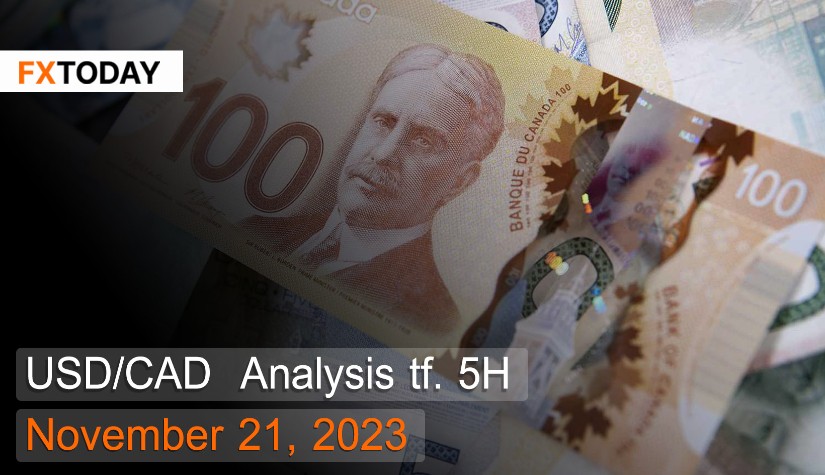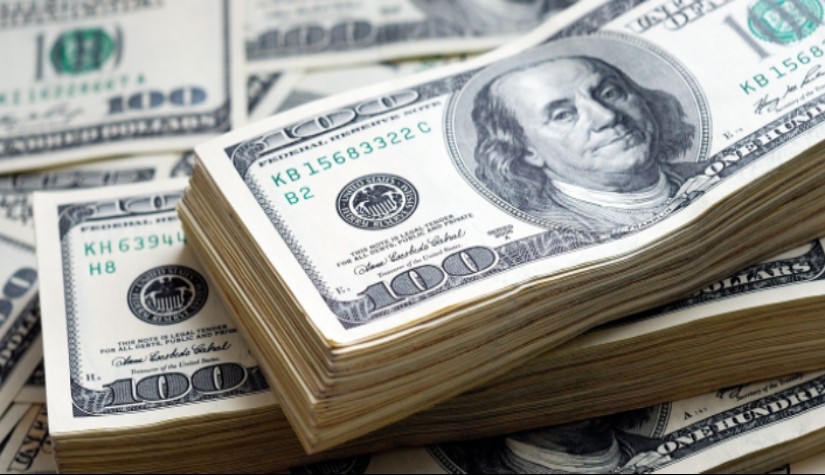The Bank of Canada may cease interest rate hikes.
The Canadian dollar has strengthened above the 1.37 Canadian dollars per US dollar level once again due to a slight recovery in oil prices and weaker-than-expected US economic data, leading investors to speculate that the Fed may not raise interest rates this year. In Canada, the reduced inflation rate in the past month and economic data indicating a slowing trend have fostered expectations that the Bank of Canada (BoC) might also refrain from raising interest rates similar to the Fed. This sentiment is primarily influenced by Canada's GDP stalling for consecutive quarters.
The Canadian raw materials price index declined by 2.5% month-on-month in October, following a 3.9% increase in September. Energy prices notably dropped by 4.7%, primarily attributed to the decrease in crude oil prices due to ongoing conflicts in the Middle East. Additionally, metal and steel prices decreased by 1.6%, mainly driven by a decline in nickel prices.
Producer prices in Canada declined by 1% in October, mainly due to noticeable drops in energy and petroleum product prices, alongside reductions in certain types of raw materials, such as a 1.2% decrease in metal products. The decrease in pork prices led to a significant 1.9% decline in food prices.
Foreign investors reduced their net investment in Canadian securities by a substantial value of 15.09 billion Canadian dollars in September, marking the largest divestment since March. This was primarily due to a decrease in holdings of bonds by 17.55 billion Canadian dollars, encompassing both private and government securities. Conversely, holdings of Canadian stocks and mutual funds increased by 1.62 billion Canadian dollars.
The yield on Canadian 10-year government bonds remained below 3.7% and is expected to decrease further. The main factors contributing to the declining bond yields include growing expectations that both the Bank of Canada and the Federal Reserve might halt their interest rate hikes. Furthermore, the Bank of Canada anticipates an inflation rate of approximately 3.5% until the latter half of 2024.
Techical analysis data (5H)
Resistance: 1.3730, 1.3748, 1.3763
Support: 1.3698, 1.3682, 1.3665
Source: Investing.com
| Name | S3 | S2 | S1 | Pivot Points | R1 | R2 | R3 |
| Classic | 1.3665 | 1.3682 | 1.3698 | 1.3715 | 1.3730 | 1.3748 | 1.3763 |
| Fibonacci | 1.3682 | 1.3695 | 1.3703 | 1.3715 | 1.3727 | 1.3735 | 1.3748 |
| Camarilla | 1.3704 | 1.3707 | 1.3710 | 1.3715 | 1.3716 | 1.3719 | 1.3722 |
| Woodie's | 1.3663 | 1.3681 | 1.3696 | 1.3714 | 1.3728 | 1.3747 | 1.3761 |
| DeMark's | - | - | 1.3690 | 1.3711 | 1.3722 | - | - |
Buy/Long 1: If the price touches support in the price range of 1.3682 - 1.3698 but cannot break the support at 1.3698, you may set a TP at approximately 1.3748 and SL at around 1.3665 or according to your acceptable risk.
Buy/Long 2: If the price breaks the resistance in the price range of 1.3730 - 1.3748, you may set a TP at approximately 1.3763 and SL at around 1.3682 or according to your acceptable risk.
Sell/Short 1: If the price touches resistance in the price range of 1.3730 - 1.3748 but cannot break the resistance at 1.3730, you may set a TP at approximately 1.3682 and SL at around 1.3763 or according to your acceptable risk.
Sell/Short 2: If the price breaks the support in the price range of 1.3682 - 1.3698, you may set a TP at approximately 1.3665 and SL at around 1.3748 or according to your acceptable risk.
| Name | Value | Action |
| RSI(14) | 42.923 | Sell |
| STOCH(9,6) | 40.224 | Sell |
| STOCHRSI(14) | 0.000 | Oversold |
| MACD(12,26) | -0.001 | Sell |
| ADX(14) | 28.004 | Sell |
| Williams %R | -86.502 | Oversold |
| CCI(14) | -113.2765 | Sell |
| ATR(14) | 0.0028 | Less Volatility |
| Highs/Lows(14) | -0.0010 | Sell |
| Ultimate Oscillator | 46.144 | Sell |
| ROC | -0.389 | Sell |
| Bull/Bear Power(13) | -0.0020 | Sell |
|
Buy:0 Sell:9 Neutral:0 Summary:Strong Sell |
||
















